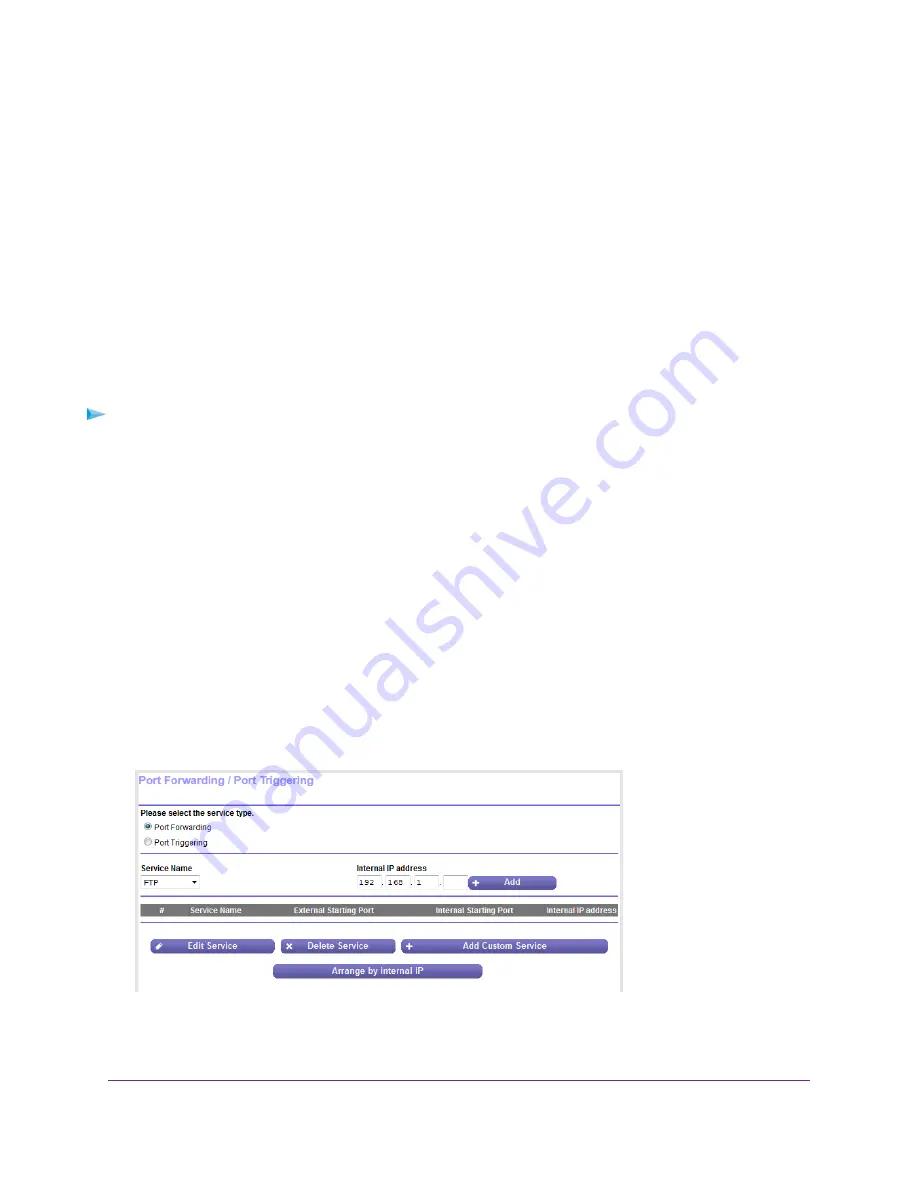
Manage Port Forwarding to a Local Server for Services
and Applications
If a server is part of your network, you can allow certain types of incoming traffic to reach the server. For
example, you might want to make a local web server, FTP server, or game server visible and available to
the Internet.
The router can forward incoming traffic with specific protocols to computers on your local network. You can
specify the servers for applications and you can also specify a default DMZ server to which the router
forwards all other incoming protocols (see
on page 136).
Forward Incoming Traffic for a Default Service or Application
You can forward traffic for a default service or application to a computer on your network.
To forward incoming traffic for a default service or application:
1.
Decide which type of service, application, or game you want to provide.
2.
Find the local IP address of the computer on your network that will provide the service.
The server computer must always receive the same IP address. To specify this setting, use the reserved
IP address feature. See
Manage Reserved LAN IP Addresses
on page 143.
3.
Launch a web browser from a computer or mobile device device that is connected to the network.
4.
Enter http://www.routerlogin.net.
A login window opens.
5.
Enter the router user name and password.
The user name is admin. The default password is password. The user name and password are
case-sensitive.
The BASIC Home page displays.
6.
Select ADVANCED > Advanced Setup > Port Forwarding / Port Triggering.
7.
Make sure that the Port Forwarding radio button is selected.
8.
From the Service Name menu, select the service or application.
Manage Port Forwarding and Port Triggering
202
Nighthawk AC1750 Smart WiFi Router Model R6700v2






























